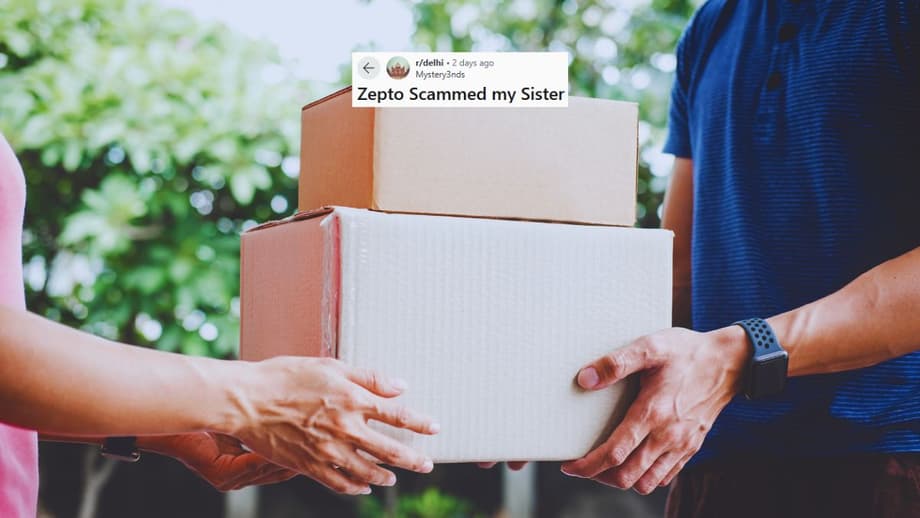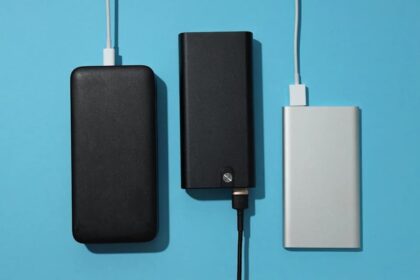A two year refund scam exposes delivery app gaps
In Nagoya, Aichi Prefecture, police arrested 38-year-old Takuya Higashimoto in early October on suspicion of fraud after a long series of false refund claims on a major food delivery platform. Investigators say he placed 1,095 orders over roughly two years, ate the meals, then told the app his food never arrived to trigger refunds. The suspected losses top 3.7 million yen (about US$24,000), a case that has sparked a wider debate over how delivery apps verify that an order is actually delivered.
- A two year refund scam exposes delivery app gaps
- How the scheme worked
- How 124 accounts and prepaid SIMs kept him hidden
- What investigators and the suspect say
- How Demae-can is responding
- Refund fraud is surging across delivery apps
- Impact on restaurants, couriers, and customers
- Legal exposure and possible penalties in Japan
- How platforms can close the gap
- Key Points
Authorities say the scheme relied on contactless delivery, a popular option since the pandemic that lets couriers leave an order at the door and depart without meeting the customer. According to investigators, Higashimoto often created new accounts, used false names and addresses, and relied on prepaid mobile phone cards to keep those accounts from being linked to one another. The approach kept him ahead of basic fraud checks long enough to repeat the trick hundreds of times before his arrest.
Public reaction has been intense across Japan and in neighboring markets that rely on similar platforms. Some users voiced frustration with refund rules that appear easy to exploit, while others focused on the persistence it took to run so many accounts for so long. The platform involved has said it will upgrade identity checks and roll out alerts for abnormal refund activity, changes that echo steps other delivery services are taking worldwide.
How the scheme worked
Investigators describe a simple playbook. Higashimoto would order meals through the delivery app Demae-can, select contactless drop off, then use the in app chat to report non-delivery. In a case authorities highlighted from July 30, he allegedly created a fresh account with a fictitious name and address, ordered ice cream, bentos, and chicken steaks, received the food, then claimed it never arrived. The app issued a refund of 16,000 yen (about US$105) the same day.
The contactless delivery loophole
Contactless delivery helps busy couriers and privacy minded customers. It also reduces face to face confirmation. Many services ask drivers to take a photo at drop off. Even with photo proof, customer service may still honor complaints when an order vanishes from a porch or when a customer insists the item never appeared. Platforms calibrate refund policies to keep genuine users happy. Fraudsters try to sit inside those generous rules, claiming non-delivery in a way that is hard to disprove.
What he ordered and how refunds added up
Police say the suspect often chose higher priced dishes, including eel bento, hamburger steaks, and premium desserts like ice cream. Each false claim produced a larger refund, so the same tactic delivered bigger returns. By cycling through many short lived accounts, he limited the number of suspicious claims tied to any single profile, which reduced the chance of an automated block.
How 124 accounts and prepaid SIMs kept him hidden
Authorities say the suspect managed 124 accounts on the platform since April 2023, often registering with false names and incorrect addresses, then cancelling within days. He also purchased prepaid mobile phone cards under fake credentials. New phone numbers and fresh profiles made each refund request look like it came from a different customer, a tactic that can blunt the effect of standard anti-fraud checks.
Disposable identities and quick cancellations
Short account lifespans limit the amount of behavior data a platform can gather. Many companies flag repeat refund requests, device fingerprints, or geolocation patterns. If a user closes an account quickly, then reappears behind a new phone number and different account details, those signals become harder to connect. That brief window was often long enough to place a few orders, ask for a refund, then disappear.
Why detection systems struggled
Retail and delivery platforms lean on a mix of rules and machine learning to decide which claims look risky. Signals can include the number of prior refunds, the device or browser used, delivery addresses, payment methods, and driver feedback. When a fraudster frequently swaps phone numbers and identities, the system sees many single account users instead of one repeat offender. That fragmentation slows down detection and pushes the problem to manual investigation, which is slower and more costly.
What investigators and the suspect say
Police say Higashimoto had been unemployed for several years and lived in Nagoya. After his arrest in early October, he reportedly told investigators that he began with a test and kept going as the refunds piled up.
During questioning, according to police, he gave a frank explanation of his mindset.
‘At first, I just tried this trick. I couldn’t stop after reaping the rewards of my fraud.’
The admission aligns with a pattern officers see in low complexity fraud. A small success encourages repetition, then escalation follows as the person becomes confident the system will not flag them. That cycle can run until a courier disputes the claim, a data analyst connects the dots, or law enforcement steps in.
How Demae-can is responding
Demae-can has said it will strengthen identity verification and build alerts for abnormal trading activity, steps aimed at stopping repeat refund abuse. Stronger identity checks can include matching names, addresses, and phone numbers across public records, or requiring two factor authentication at registration. Alerts can flag patterns such as high refund frequency, unusual ordering hours, or rapid account creation tied to the same device or network.
Platforms also test procedural fixes. Examples include requiring more photo proof at drop off, asking for a delivery code on riskier orders, or temporarily limiting refunds on accounts with repeated complaints. Each measure involves trade offs between convenience and protection. Too much friction pushes away honest customers. Too little invites exploitation.
Refund fraud is surging across delivery apps
Refund abuse is not unique to Japan. A fraud prevention firm that works with major delivery platforms estimates that roughly 48% of consumer fraud on delivery apps involves refund claims. Online forums host step by step guides on how to phrase complaints, how to create fresh emails and phone numbers, and how to get back on a platform after a ban. Some schemes go further by stacking new user discounts across many accounts, draining marketing budgets and inflating growth statistics.
The wider retail industry faces similar pressures. A joint report by Appriss Retail and Deloitte estimated US$103 billion in fraudulent returns in 2024. Delivery apps have tried new checks to push back. In some regions, services ask the courier to confirm a one time code with the customer. Others increase scrutiny when an account files several complaints in a short period, or when a device raises location or reputation flags. In China, police in Jiangsu confronted a trio who survived for weeks with only 19 yuan by rotating non-delivery claims across accounts, a smaller case that mirrors the pattern seen in Nagoya. Fraud tactics evolve in response, which keeps pressure on apps to update models, policies, and training.
Impact on restaurants, couriers, and customers
Refund abuse rarely hits the platform alone. Restaurants can lose the cost of ingredients, preparation time, and delivery commissions when an order is refunded. Thin margins mean a string of losses can erase a day’s profits. Some restaurant partners report higher dispute volumes during busy periods, when staff have less time to collect evidence and fight claims.
Couriers can face unfair penalties when customers say an order never arrived. If a driver gets several non-delivery complaints, even when they followed instructions, the account can be restricted or deactivated. That risk pressures drivers to demand face to face handoffs even when the customer asks for contactless drop off, which reduces the convenience that contactless was meant to provide.
Customers also feel the effect. Platforms may tighten refund rules, demand more photos of drop offs, or require delivery codes. Honest users who had a genuinely lost or stolen order can face longer wait times and tougher screening. Striking a balance between trust and verification is the central challenge for the industry.
Legal exposure and possible penalties in Japan
Police arrested Higashimoto on suspicion of fraud. In Japan, fraud under the Penal Code can carry a prison term of up to 10 years. The case remains under investigation, and prosecutors will determine the final charges. In similar cases, investigators sometimes also consider offenses such as obstruction of business by fraudulent means, a category applied when a person manipulates systems to cause financial harm.
Building a case often requires linking many transactions to the same person. Delivery platforms can assist with records that show order histories, chat logs, refund decisions, device identifiers, and courier notes. Carriers can help confirm ownership of phone numbers used to register accounts. A careful paper trail improves the chance of a successful prosecution while limiting the risk that legitimate customer disputes are caught up in the sweep.
How platforms can close the gap
No single tool will erase refund abuse. A layered approach reduces risk without destroying the ease that customers expect. The following practices are becoming common across the industry, especially for accounts or orders that score as higher risk:
- Stronger identity checks at sign up, including verification of phone numbers and addresses with trusted data sources
- Device fingerprinting to connect suspicious activity across many accounts from the same phone or browser
- Delivery verification codes for riskier orders, combined with clearer photo requirements for contactless drop offs
- Rate limits on the number of accounts that can be created from the same device or network in a short period
- Automated alerts for unusual refund patterns, with faster escalation to human review teams
- Closer coordination with restaurants and couriers to preserve evidence at drop off, such as clearer notes and time stamped photos
- Stricter consequences for serial abusers, including network wide bans that persist across device and identity changes
- Education for customers about refund policies, including what evidence is needed when something genuinely goes wrong
Platforms that combine identity, device, and behavior data tend to spot repeat abuse faster. The aim is not to block refunds, but to make sure that claims come from real customers with real problems, while redirecting serial abusers to more rigorous checks.
Key Points
- Police in Nagoya arrested 38-year-old Takuya Higashimoto on suspicion of fraud tied to 1,095 false refund claims
- Losses exceed 3.7 million yen, with many orders placed through contactless delivery and disputed via in app chat
- Investigators say he used 124 accounts, false names and addresses, and prepaid mobile phone cards to avoid detection
- In a July 30 example, he ordered food then secured a 16,000 yen refund after falsely claiming non-delivery
- Demae-can says it will strengthen identity verification and add alerts for abnormal trading activity
- Refund abuse is a global problem, with a large share of consumer fraud on delivery apps linked to refund claims
- Restaurants, couriers, and honest customers bear the cost when refund systems are abused
- Fraud charges in Japan can carry a prison term of up to 10 years if a defendant is convicted












